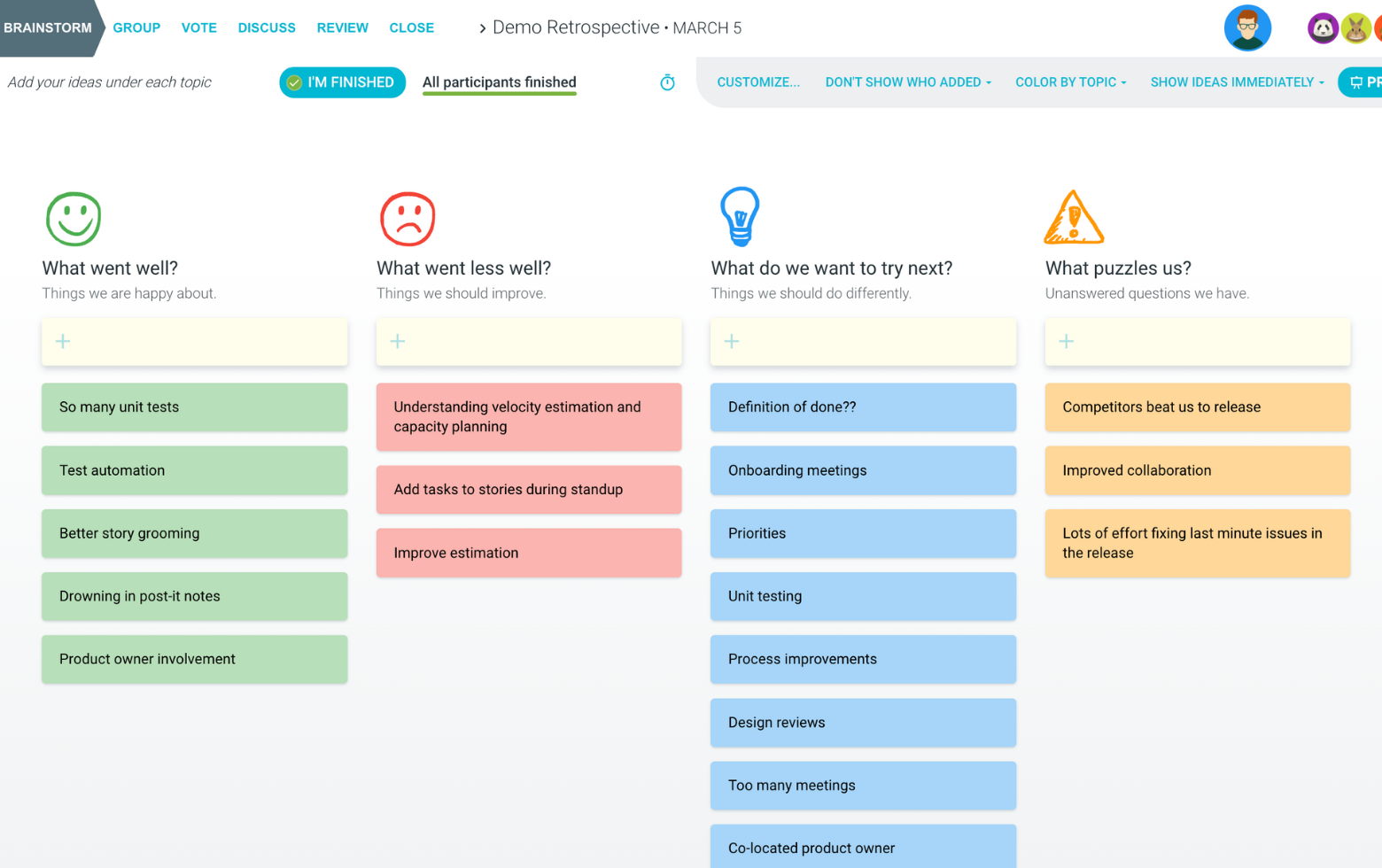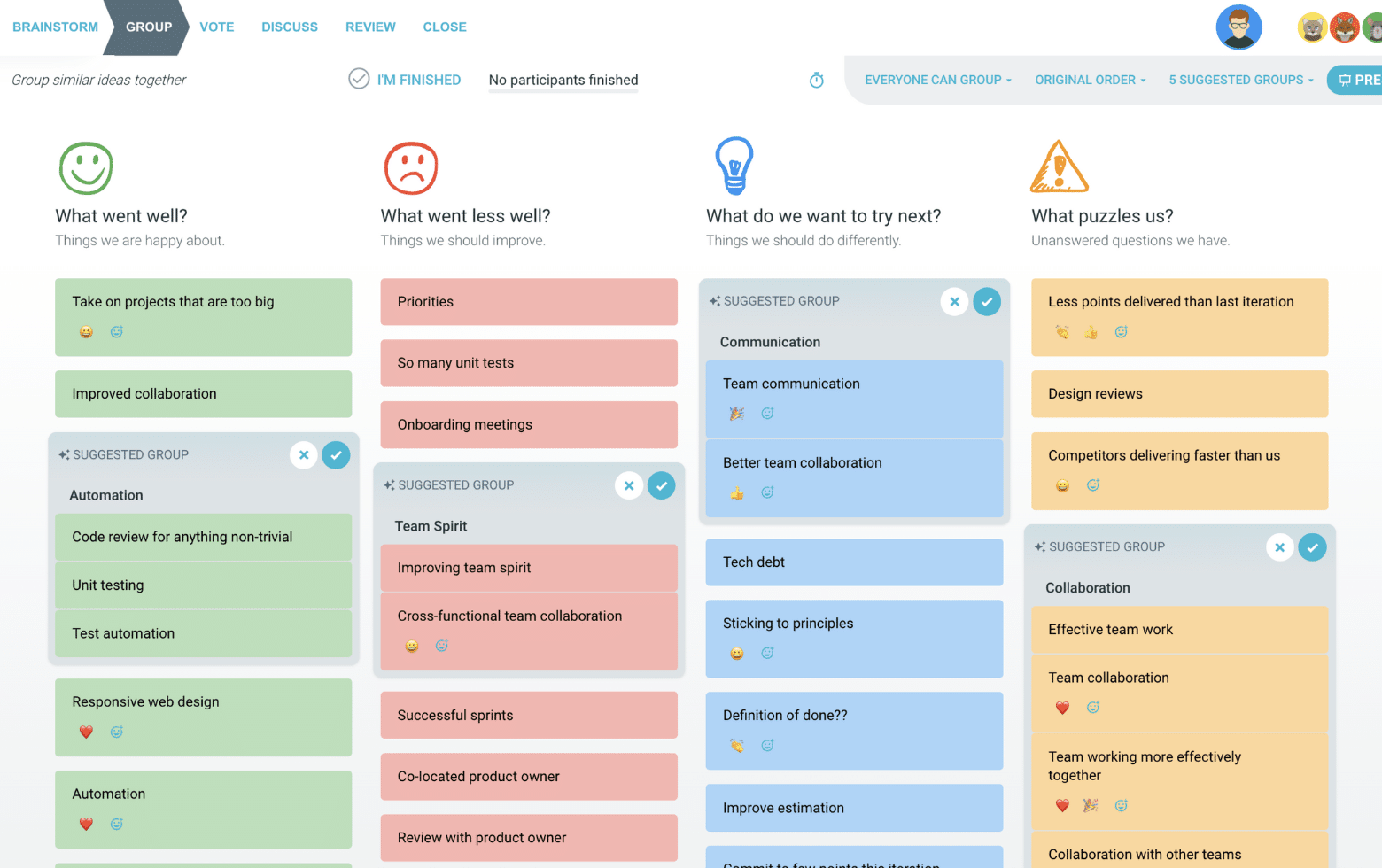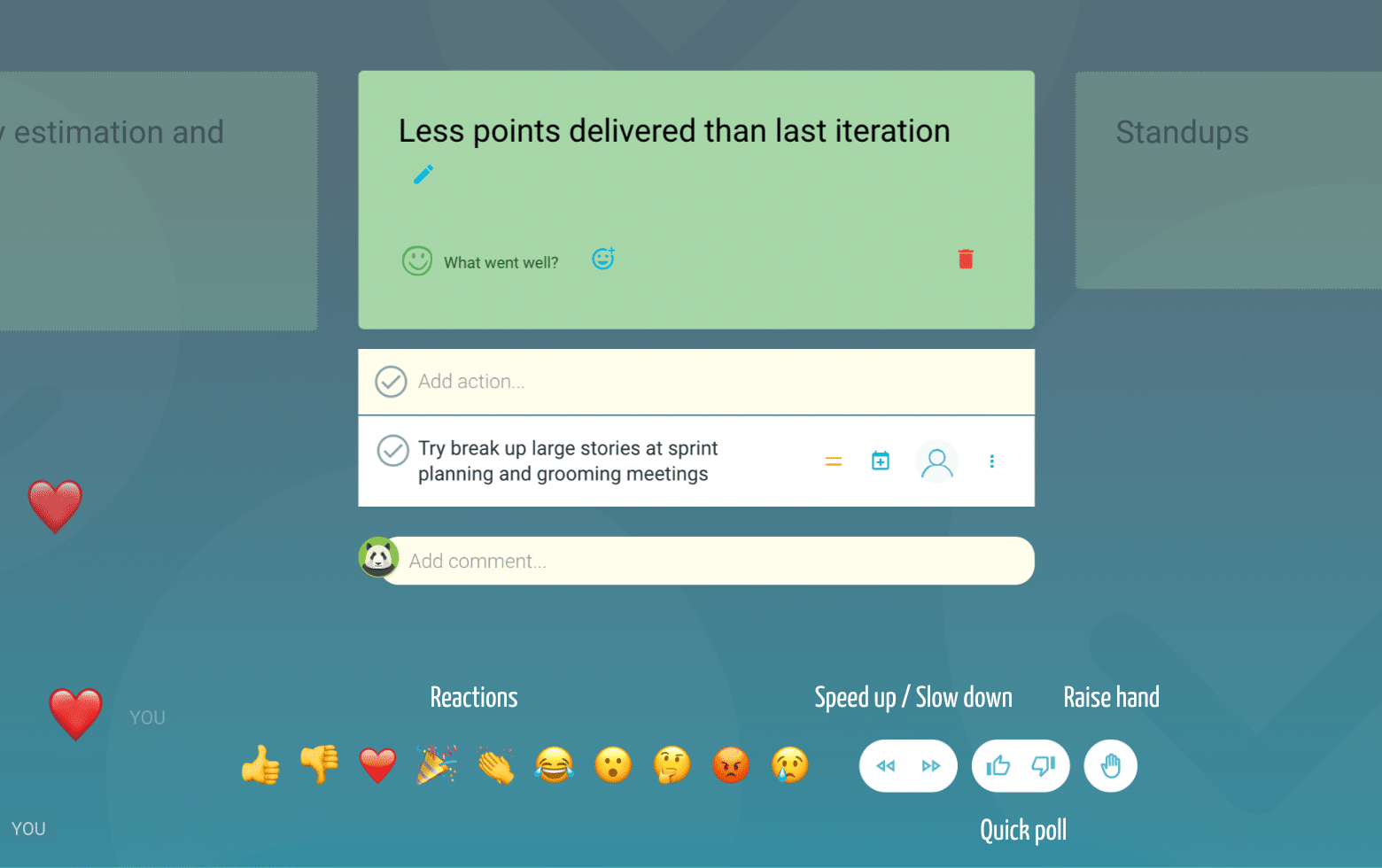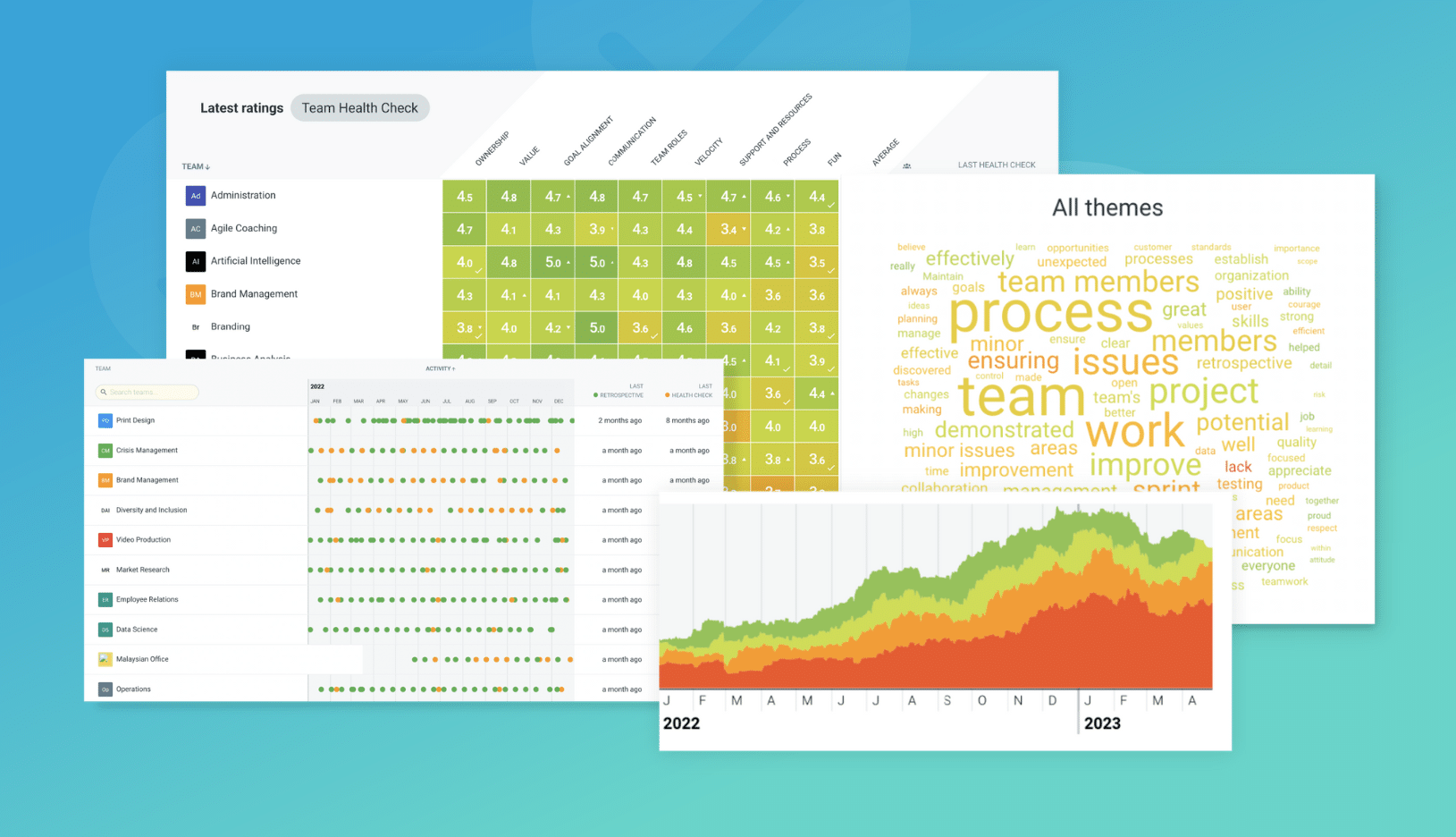What is a Starfish retrospective?
Stafish retrospective format
Keep Doing
Less Of
More Of
Stop Doing
Start Doing
While the ideal scenario is to do each topic one by one, you can also open it up so that people can add ideas under any of the sections when they are ready. You can then discuss them in the above order.

Suggested icebreaker questions for Starfish retrospectives
- How do you decide if you want more of something?
- If you were something that was found in the ocean, what would you be?
- Name a place you could see a star.
Retro Rehearsal
Invite your team to rehearse the retro referencing something based on physical health.
For example, thinking of the last time you did a physical activity, what did you want to keep doing, what did you want less of, what did you want more of, what did you want to stop doing or what did you want to start doing?
Ideas and tips for your Starfish retrospective exercise
-
Set the stage. Let people know that the objective of the retrospective is to focus on actionable items and refining current practice and activity.
-
There might be ideas where there are differences of perception. For example one person might decide that they want more meetings and another might want less. Using dot voting by the team will allow the team to help build consensus. It will also important to further discuss and to resolve any conflict so that a clear action item can be carried forward.
-
Getting team buy in to the changes is important. By allowing them to brainstorm, vote and discuss is a great start. A good technique to help crystalise the change is to ask the team what would stop them from putting these changes into place.
-
A neat way to gauge the overall health of the project is to look at the number of items under each of the topics.
-
A thank you goes a long way. Give a shout out to the team at the end of the meeting.
How to run a Starfish retrospective in TeamRetro
Start Your Session in a Click
Log into TeamRetro and choose your template. Customise questions and the workflow to create your perfect retro for your team.
Create Your Team Easily – No Separate Accounts Needed
Brainstorm Individually – Free From Bias
Smart Grouping for Faster Insights
Fair, Flexible, and Fast Voting
Engage, React, and Capture Key Insights
Walk your team through ideas one by one with Presentation Mode. Stay in sync, spark real-time discussions, and capture feedback with comments, live reactions, and polls—all in one place.
Turn Ideas Into Action
Propose next steps with team buy-in, get AI-powered action suggestions, and keep everything in one place. Committed actions sync to your personal dashboard and integrate with your workflow tools—keeping you on track.
Save, Share, and Stay on Track
Get quick AI-powered summaries, add facilitator notes, and store retrospectives in your library for easy access. Schedule your next session and track published actions to keep your team accountable at the next retro.
Turn Team Data into Actionable Insights
Uncover trends, common themes, and key engagement metrics at a glance. Track sentiment shifts, analyze conversations, and monitor completed actions to drive continuous improvement.








